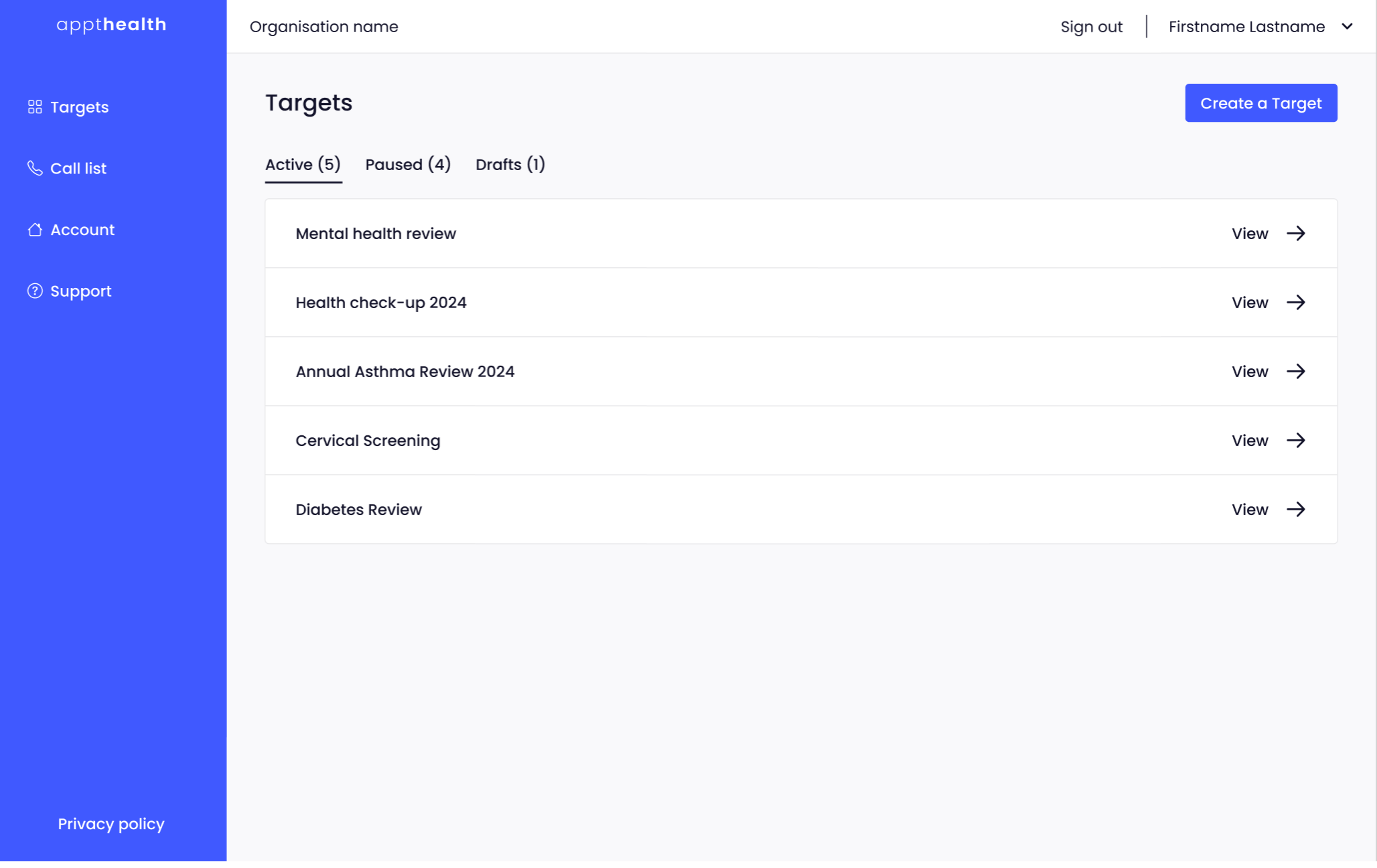What is a target?
Think of a target as a specific group of patients who share similar healthcare needs, such as age, medical condition, or care plan. By creating targets, you can tailor your recall efforts to ensure the right message reaches the right people at the right time.
Benefits of well-defined targets
- Prioritise patient care: Focus on patients with the highest need.
- Improve patient outcomes: Increase attendance for essential checks and treatments.
- Optimise resources: Efficiently allocate your practice's time and staff.
Examples of targets
To effectively manage your patient recalls, it's often helpful to divide your targets up into smaller subgroups. This will give you more granular control over the appointments, messaging and slots given to each group.
Here are some examples of common targets:
- Annual Asthma Review
- Diabetes Review
- Flu Jabs - ages 65+
- Flu Jabs - pregnant women
Managing your targets
We've recently introduced a better way to manage your targets that allows you to easily separate out active, paused and draft targets. This means that you can easily differentiate between last year's targets and your new ones, as well as ones you're still working on. You can read more about our new tabbed target management view on our blog.

This guide will walk you through setting up a target for the first time.

